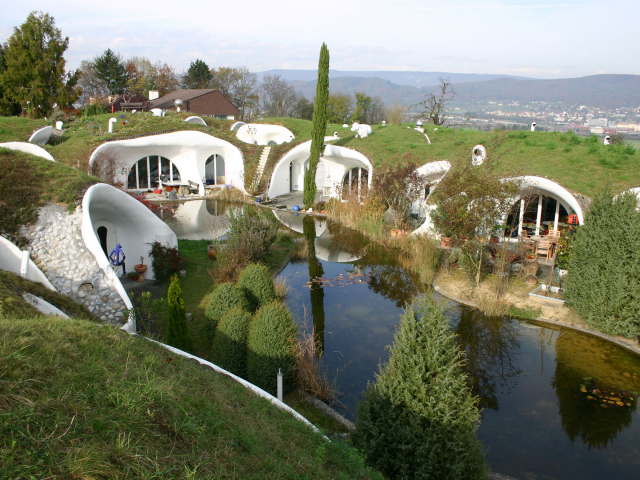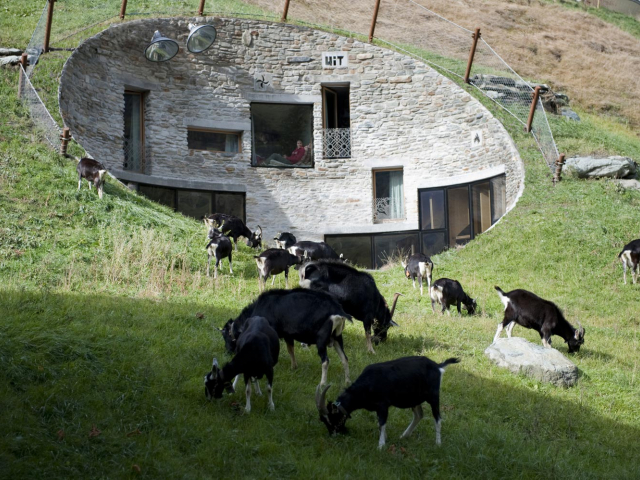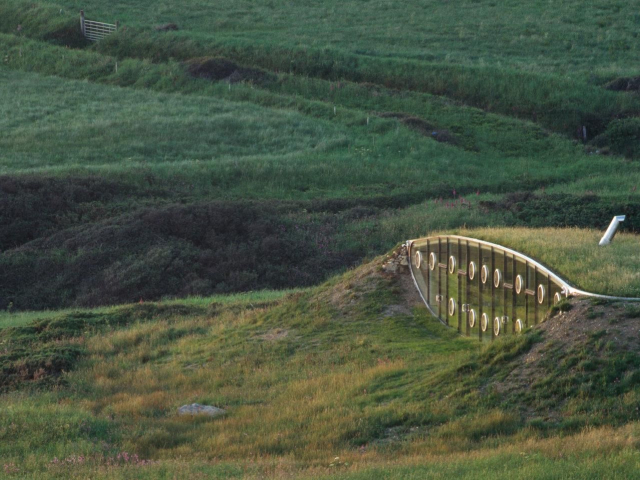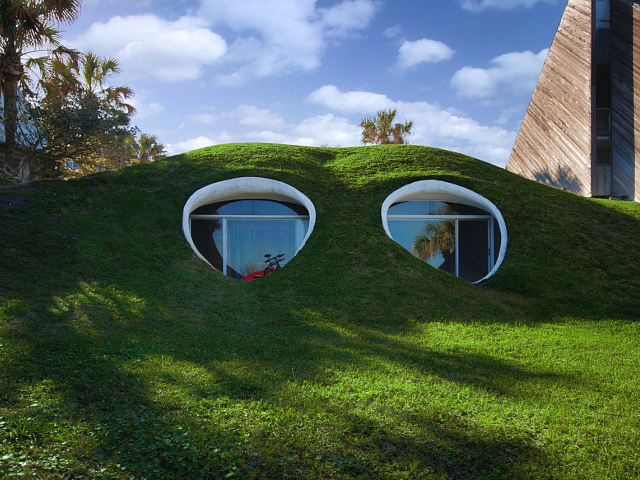
Architectural Marvels of Peter Vetsch
Renowned Swiss architect Peter Vetsch has emerged as a leading visionary in the realm of underground architecture, crafting over a hundred distinctive dwellings across Switzerland and beyond. Vetsch's projects are marked by a novel use of spray-on concrete, resulting in structures with fluid, organic lines that evoke the masterpieces of Antonio Gaudi. These buildings not only harmonize with their surroundings but also captivate with their singular aesthetic appeal.

Villa Vals
In the quaint Swiss village of Vals, known for its thermal baths, lies Villa Vals, a striking testament to innovative underground design. Foregoing the conventional chalet to preserve the scenic vista, architects devised a creative solution by embedding the villa beneath the earth. Villa Vals stands as a bold statement on integrating architectural endeavors with the natural landscape, embodying a seamless blend of beauty and functionality.

WillemsenU Studio's Earthbound Creation
Dutch design firm WillemsenU unveiled an underground house near Eindhoven, set within a protected nature reserve. This structure descends six meters underground, with its living spaces thoughtfully placed to maximize harmony with the terrain. Above ground, the house disguises itself as a verdant hill adorned with wildflowers, offering a secluded and picturesque living environment that emphasizes the locale's inherent beauty.

Malator house
In Wales, the Malator house, conceived by the British design firm Future Systems for politician Bob Marshall-Andrews, ingeniously integrates into the landscape of a national park. By burying most of the structure, the architects ensured that Malator blends with its hillside setting, its chimney emerging as the sole visible feature. This distinctive approach has affectionately earned it the nickname "the Teletubby house" among locals.

Dune House
The Dune House, a creation of the esteemed American architect William Morgan, rounds up our list. Nestled on the shores of Florida's Atlantic Beach, this 1970s construction is ensconced within a sand dune formed post-Hurricane Dora. Comprising two mirrored halves, the Dune House merges flawlessly with its sandy surroundings, invoking the enchanting domiciles of Tolkien's hobbits and showcasing the versatility of underground architecture.
 English
English 
 Русский
Русский Bahasa Indonesia
Bahasa Indonesia Bahasa Malay
Bahasa Malay ไทย
ไทย Español
Español Deutsch
Deutsch Български
Български Français
Français Tiếng Việt
Tiếng Việt 中文
中文 বাংলা
বাংলা हिन्दी
हिन्दी Čeština
Čeština Українська
Українська Română
Română
